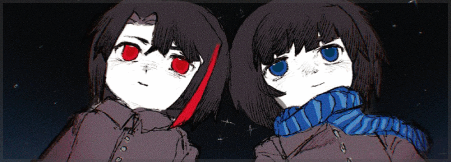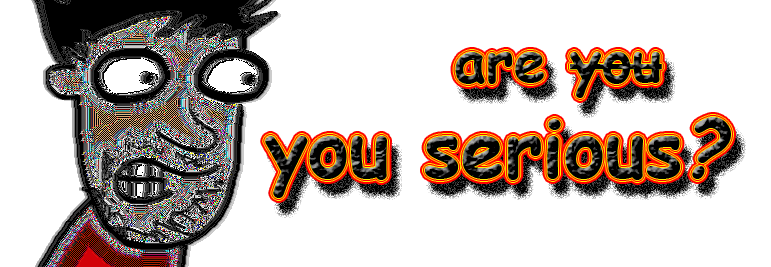20-25 minute read
August 10, 2025
CWs: cannibalism, drugs, SA, CSA, forcefem, dysphoria, cannibalism, transphobia, trafficking, nazis, conversion therapy
Obviously, this will contain spoilers for Tokyo Ghoul and Tokyo Ghoul :re
Contents:
1. Centipede Psychosis
2. Zombie Making
3. Character Analysis
4. :re As A Liberation Story
5. Passing and Ostracization
6. Conversion Therapy and Liberation
Other scattered thoughts
1. Centipede Psychosis
For those of you who have ever been invested in the CCRU or lemur/numogram magic at any point, the idea that Ixidod (2::3) has been a consistent theme throughout the last five years of my life probably isn’t the strangest thing you’ve ever heard. Back in 2020 HJH summoned Ixidod into our home. “Crisis through excess” became an enveloping theme as Ixidod specifically attached herself to me rather than the summoner, given that I had spent the summer and autumn of 2021 living by myself (or should I say, with Ixi?). A lot of lemurs tend to get bored and fuck off at some point but Ixidod’s attachment to excess caused her to stick around. I'm not the sort of person who’s going to tell my unwelcome houseguests to fuck off, as I'm the sort to capture spiders, silverfish, and flies and move them to places where we won’t bother each other, but the centipede had wormed her way into my ear. We picked up a partially broken organ and with the unwitting help of our friend Thalia (thank you Thalia!) we carved a sigil representing Ixidod into the top board of the organ and smashed it to pieces. After that, the tension eased and things went somewhat back to normal. Or did they?
Despite the lemurs typically being referred to as “she” Ixidod is otherwise called “King Sid” which marks her as a sort of bigender, Hekate-like figure. She is also referred to as “The Zombie Maker” in the pandemonium, and is signaled by “Micropause abuse” which is otherwise referred to as “A-Death” (Axsys Death). Micropause drugs would refer to drugs that essentially zombify the user through making them experience a simulation of AI schizophrenia, something that has become more and more common as chatGPT and other LLMs either experience symptoms of psychosis or cause human users to. It is already very on the nose that both users and coders alike refer to LLMs attempting to fill in the blanks on information it otherwise cannot tell you as “hallucinating.”
In the collected works book the last entry before the pandemonium is Tale of Centipede, which specifically pertains to Ixidod. I cannot seem to find the actual website page, so I will copy it here.
Some say there was a time when the dead were still. In those days, when anything died it was soon forgotten, and no one knew – or cared – what became of it. No one had heard of Ixidod at that time, and whatever she did – if anything at all – was of no concern to anybody. No one had heard of Centipede either, who lived under a rock, in secret. All this changed one day, or so it is said. Ixidod – whose perception was very keen – spotted Centipede hunting, creeping, and hiding, and thought to herself: ‘Centipede is so very cunning and silent, together we could find out something no one else knows, and learn the secrets of the dead’. It seems that Centipede must have agreed to Ixidod's plan, because since that time the two of them have been inseparable, and everyone crossing into the region of the dead has met Centipede on the way. Centipede’s fangs are now laden with the venom of Ixidod, and that is called the nectar of deadsense. In any case, it was only Oddubb – lurking nearby – who saw what truly passed between Ixidod and Centipede at that time, and she is sworn to deathly silence about it, or so she says.
Here the centipede is inseparable from Ixidod, and Ixidod is inseparable from the centipede. She is both sisters with the centipede, and consumed by it. Centipede is a venomous hunter, and therefore so is Ixidod. The Skincrawlers passage of CCRU discusses the zombification of Black Lake, Ontario through Sarkonian micropause related experiments. The residents are infected with “Black Lake Syndrome” and experience AI schizophrenia. This incident is meant to release Thothtodlana, the queen of worms, at the lowest level of Black Lake Technical Institute. Although the following passage haves similarities with the Katak/Takka story and the end of the Skincrawlers passage mentioning 4 and 5, the connection between micropause zombification and worms here makes it evident to me that Thothtodlana is either Ixidod or a combination of Ixidod and centipede. The passage says:
When the world was born Thothtodlana entered into the secret of the Kattku and - confusing herself with the universe - circled the whole of time. That was when she swam through living flesh, her hunger unlimited and furious. She seemed doomed to devour herself forever.
Although Katak circles the earth like the ouroboros, she is chasing her tail as opposed to eating herself. Can a zombie survive on its own flesh? Well, in Tokyo Ghoul, Shu Tsukiyama does, at one point. Ghoul cannibalism causes extreme psychosis. The protagonist Kaneki’s refusal to feed on humans turns him into a cannibal out of pure necessity and causes him to experience increasingly severe states of psychosis. Centipedes are prone to eating other arthropods. It turns him into a bug and causes his demise at the end of the first run of Tokyo Ghoul, paralleling Gregor Samsa from The Transformation, which is hinted at from the very beginning due to Kaneki’s interest in the works of Kafka.
Ken Kaneki is the centipede. While Dr. Kanou serves as “the zombie maker,” Kaneki’s true awakening to understanding himself as a ghoul, as an undead, is at the hands of Yamori after he inserts a centipede into Kaneki’s ear. Although Yamori is promptly killed by Juuzou Suzuya, he stays with Kaneki forever as one of his many headmates, like Rize. Here Yamori is Ixidod, and Kaneki is centipede. Together they are the queen of worms. In :re, Kaneki is called “The one eyed king” making him the king/queen of worms.

I never felt Ixidod’s presence truly leave. After finishing the :re manga, I was compelled to reread the skincrawlers and Sarkoleptic parts of CCRU, and then promptly began writing Xenopoetry I, an album about Black Lake and the centipede.
2. Zombie Making
A primary theme of Mary Shelly’s Frankenstein is Dr. Victor Frankenstein’s dehumanization of women, with him not just viewing them as lesser than man, but on the same level as animal. His patriarchal solipsism causes him to be unable to see Elizabeth as fully human or sentient but as a possession, a pet. This same mindset applies to his creation of the monster, who’s place in existence naturally emasculates it. Elizabeth’s death and Victor’s decision to create a bride for his monster proves his lack of ability to see women as human. Dr. Frankenstein does not fear the monster but the idea that this bride may have some level of free will, just like the original monster.
“She who, in all probability, was to become a thinking and reasoning animal, might refuse to comply with a compact made before her creation.”
Kaneki’s creation at the hands of Kanou/V/Aogiri does effectively emasculate him. At the beginning of Tokyo Ghoul he is still a teenager and has barely become anything that resembles a “man.” He is assumed to be a virgin, and therefore is easily seduced by Rize who views him as prey, as lesser. She has no plans to fulfill “women’s role” for him but to literally consume him. At the hands of Dr. Kanou playing God, Rize plays the role of Adam as her kakuho (organ that causes her regenerative and offensive abilities) serves as the rib. The kakuho is transplanted into Kaneki who plays the role of Eve, the first of her kind: the half man, the half ghoul. Rize is dead and only lives on as a schizophrenized aspect of Kaneki. ADAM IS DEAD. LONG LIVE EVE.
Kaneki is very literally part woman as Eve is part man. Eve is entirely made up from man, she cannot exist without the rib, but here the gender roles are reversed. Eve, Kaneki, and Frankenstein’s monster all share the trait of being prototypes. Dr. Kanou, Victor Frankenstein, and the Abrahamic God all share a role of being self perceived superior beings, creating beings to oppress and make suffer. At the hands of Kanou, Amon Koutarou too is emasculated and plays the role of the monster’s bride, not a prototype but a revived corpse meant to serve a specific purpose, a soldier, under the hopes that he will not have free will. As a “floppy” he has failed his role as woman and exiled. Dr. Kanou creates Kaneki as an experiment in order to “advance the human race” as if ghoulification is enlightening, but this idea serves as misanthropic rapture. He wants not to solve the division between humans and ghouls like the scientists who work to end the need for ghouls to feed on humans, but to create an ultimate cannibalism and rape world. Dr. Frankenstein is just as misanthropic. To play God is misanthropy and that goes for God as well.
3. Character readings
Basically what I’m saying here is that Ken Kaneki is either bigender, or a trans woman, at least allegorically speaking. Tokyo Ghoul is one of the most blatantly queer stories I’ve come across, and it’s not that it only exists in allegory because of the amount of explicitly queer characters it has. Sui Ishida even originally planned for Kaneki to be gay but it seems like a “Stone Ocean” situation. Like Hirohiko Araki, Ishida knows a thing or two about drawing beautiful caked up men. Nothing can make me feel like the sex scene with Touka and Kaneki isn’t extremely forced and unsexy.
Looking at the TG subreddit it makes it pretty clear that any analysis of character’s sexualities (or anything at all, apparently) means you must be beaten to death with hammers. I’m going to do it anyway and talk about Juuzou, Tooru, Nico, and Uta.


My read on Juuzou Suzuyais that despite being subject to forced feminization and castration, their upbringing as a sort of feral child effectively gave them little to no comprehension of their gender or how it works socially. When brought to the CCG they are referred to as “Rei,” the name given to them by Big Mama, although they choose the name Juuzou, a masculine name meaning thirteen. In TG1 Juuzou’s obsession with death and the number 13 largely overcodes their sense of self. They act upon psychopathy as a coping mechanism, the pins they put in their hair form the number XIII, they carry a reaper scythe called “Jason,” and wear an armband with the same numerals in :re. Their ID is shown at one point which lists their gender as X and their appearance is deliberately androgynous. Investigator Marude misgenders Juuzou as female when they meet which obviously makes them start to disassociate. Searching online makes it evident that a lot of TG fans are very insistent about gendering Juuzou as male but they are also beloved by nonbinary and agender fans. They are obviously not female, but their presentation is more ambiguous then simply being male, and this comes closer to complexities I find in the presentations of many nonbinary people I encounter including myself. While their trauma is shocking and severe and not handled with perfect grace I found them relatable as a character who was forced to grow up as something they weren’t. To add, Suzuya is one of the few main characters who is not shown or implied to pursue any romantic or sexual relations. Instead their character arc focuses on them overcoming their trauma response and psychopathy, their familial-like relationship with Shinohara, and their mentorship of Tooru Mitsuki.
Tooru Mutsuki, who makes his first appearance in :re is explicitly a trans man. Because I had never heard of this character before I was pleasantly shocked to see that they never bother to go back on his transness and make some insistence that he'd rather just be a girl. Not only is he trans, but a great deal of his character arc has to deal not with transitioning, but with the lived experience of being trans for a long time and dealing with transphobia and dysphoria. Misgendering manifests as a villain through the Torso ghoul, who pursues Mutsuki while viewing him as a woman. During the auction extermination both he and Juuzou are forced to confront their mutual dysphoria while crossdressing in order to infiltrate the auction, This too is where Juuzou’s arc with Big Mama is closed in order for them to take on the mentor role for Tooru. A lot of people seem to take major issues with the idea of Tooru’s dysphoria stemming from abuse trauma, and his arc with Torso acting as a simulation for him to literally kill that trauma, but they don’t detransition him and everyone keeps referring to him as male. I could not care, they resolve his plot and then turn him into a gay yandere. I’m going to go out on a limb here and say that his kagune becoming massive after the torso incident is even subtextual evidence of male gender affirmation due to a lot of the non-ukaku kagune being incredibly phallic.
Almost all of Shuu Tsukiyama’s character arc is based on his deep affection for Kaneki. He is unmistakably gay. A lot of the cannibalism is heavily sexualized but in the case of the relationship between them it goes into overdrive. Tsukiyama keeps a handkerchief with Kaneki’s blood on it in his pocket to smell, tries to eat him multiple times, and spends close to half of the second series bedridden and malnourished because Kaneki is gone. Toxic yaoi OTP. During the second half of each series Tsukiyama is relegated to a sort of court eunuch role.
Within Aogiri, Nico is flamboyantly gay and in what seems like a toxic relationship with Yamori. If they are not explicitly a couple, or if Yamori is not gay, he still indulges Nico's blatantly masochistic interests. Uta of the clowns expresses interest in both men and women.
Of course this was written during the 2010s, a time when concepts like “being transgender” or “nonbinary” were brand new to a majority of cisgender people and there are definitely gaps and failings, but having a lot of queer representation in a story that effectively functions as a queer liberation story around this time feels special, and it feels like Ishida was trying his best, most of the time. A lot of people of people take issue with Mutsuki’s loose ends and that both he and Juuzou had psychopathic outlets, or that Nico is played off stereotypically, and especially that Big Mama is either a trans woman or crossdresser (it is NOT stated which and this is by far the fairest criticism although it’s mentioned very briefly and on hand in :RE) but where this misses the point is that a vast majority of the characters in this series, regardless of sexuality, are portrayed as complete sadistic psychopaths. Furuta is downright genocidal, Kanou tortured people and force-fed them human meat, Tsukiyama’s dad is basically ghoul Epstein, Kureo Mado is a sadist murderer who received joy from killing Hinami’s mom in front of her, Torso is a rapist, Rize killed people for fun, Donato ate a bunch of kids, Kijima violates law by torturing ghouls… This is a fucking horror series, if you can’t handle there being gay characters who do bad things in a series about underground clique societies of queer-coded cannibals fighting against fascist-coded police you need to get over yourself. The Rocky Horror Picture Show, written by a transphobe, where Tim Curry does trannyface and rapes the main characters is one of the most beloved pieces of “queer media” of all time.
4. :re As A Liberation Story
Although in the manga Kaneki is presented as this kind and loving person who wants the best for his friends, the anime’s deviation from the story obviously gave TG the representation of an edgy meme anime. During its run it developed an unserious reputation because of anime Kaneki being presented as an edge lord and the popularity of the gone” profile picture meme. It's nothing uncommon for fandom and anti-fandom creating an extremely warped image of the contents of an art piece (see: Homestuck). It is precisely why a lot of “cringe culture” is useless and regressive, especially as it is applied to anything that seems “gay.” With that in mind I approached checking out Tokyo Ghoul with a wary eye but it became evident that a its cementation in cringe culture is likely due to the dissonance of its queerness with the childish and homophobic behavior exhibited by its fandom.
Ghouls do in fact serve as a blatant allegory for the place that gay and transgender people occupy in society and how they are viewed. Trans people especially are viewed by cisgender people as inherently predatory and monstrous. There are certain arguments that can be made that mapping ghouls and their cannibal activities to homosexuality is extremely problematic but not only do vampire stories have a long history of queer coding, but it is well established early on that ghouls are not innately predatory or evil. Ghouls are presented under Mccarthyist logic— Both the news and the CCG (Commission of Counter Ghoul/Ghoul Countermeasures Bureau) propagate the idea that ghouls may be walking among you. The CCG has a hotline where you can report potential ghoul activity, which could lead to them investigating and spying on citizens in order to determine their racial purity. Especially in the first run of the series the CCG’s dialogues about ghouls are coded to be horrendously fascist and dehumanizing, paralleling the blood libel presented by Nazi discussion of queers and jews, and how anti-communist Americans would talk about socialists and queers during the red scare. They are presented as not just less than human but less than animal, like a disease that must be eradicated before they eradicate you. This set up when Kaneki, who has not yet been turned into a ghoul, initially discusses the fear of ghouls with his friend Hide after seeing news about the binge eater ghoul (Rize). During his transformation into a ghoul Kaneki agonizes over the idea that he may have to hurt people and the sensory aspects of having to eat human meat. Although his first encounter with a ghoul after Rize is being attacked by Nishiki, he is promptly rescued by Touka and the Anteiku coffee shop ghouls who do not hunt, but instead recover corpses from suicides in order to feed. This helps him to understand that there are more ways to live as a ghoul than by predatory means.
5. Passing and Ostracization
A lot of the first run of the series revolves around the Anteiku ghouls attempting to hide in plain sight. This is not because they are predatory because they aren’t, but because they want to feel just as human. After Kaneki’s transformation, his relationship to Hide (who Ishida had intended to be Kaneki’s boyfriend) does not change, even though it is later revealed that he knew that Kaneki had turned into a ghoul. He still loves him just the same. Although Nishiki does hunt, he retains a functional and loving relationship with his human girlfriend Kimi, who goes as far as to offer him a piece of her flesh in order for him to not starve to death. While the news may imply that ghouls become increasingly psychotic in the face of starvation, she trusts him enough to not harm her more than necessary. Quzin Yoshimura too is revealed to have had relations with a human woman, which caused the birth of Eto, the One-Eyed Owl. Touka intends to go to university and spends much of her free time with her human friend Yoriko, going as far as to attempt to eat the meals and treats lovingly prepared by her even though she cannot digest them. In this case, it is not just the need to pass in society to avoid persecution but her caring personality showing despite her affliction. The thing about the Anteiku ghoul’s attempts at assimilation are that they are in vain, ending with the CCG raiding Anteiku, the dissolution of the group, and the “death” of Kaneki at the hands of Kishou Arima. A lot of Touka’s character arc revolves around repeated attempts to assimilate into human society that push her further and further away from being able to maintain friendships with humans or interface with society as anything but a service work employee. Not only does this make Touka function as one of the more allegorically trans characters but her working at a coffee shop in the first run, and running one in the second run accidentally implies this even more, as trans people face disproportionate employment discrimination and are often stuck doing food service work.
6. Conversion Therapy and Liberation
Kaneki’s death at the end of Tokyo Ghoul 1 is just that. Although he is technically alive in :re, he is no longer himself. His memory has been destroyed and he has been co-opted by forces who assign him an identity he must abide by while facing intense scrutiny from his peers who constantly other him because they know that he cannot change for good, that there is a risk that he may return to his old ways. This functions as a blatant allegory for how queer people who are forced to go undergo conversion therapy are never really viewed as “normal” despite the intentions. They are subject to the same panoptic analysis applied to recovering addicts and ostracized by peers who know that the conversion doesn’t truly work, and that the real purpose is to use them as tools for the reification of heteronormativity and nuclear family reproduction. In Kaneki/Sasaki’s case, it is to force him to exterminate others like him. The “RC Cells” that control his kagune are medically depleted and each time he “awakens” and snaps out of his hypnotized state he is immediately sedated. His identity calls out to him from inside his mind.
There have been many cases in which high ranking members of the church or the state who push homophobia onto others are closet homosexuals. In the end, the CCGs extreme fascism is turned on under the leadership of Furuta, reveals to be an ghoul. Humans become more skeptical. Ghouls, and former CCG members who are alienated by its fascism or loyal to Arima and Sasaki organize under GOAT, storm the CCG building, and defend each other to the end. It is all violent revolution. Despite the tragedy of the dragon event, medical advances are made in the aftermath which ostensibly solves the problem of ghouls needing to prey on humans. It begs the question, why wasn’t this done already?
Oppression. Control. Industry. Psychopathy. Homophobia?
This essay has concluded here. Other scatttered thoughts and criticisms, are below but are either not significant enough to warrant full sections, or irrelevant to the rest of this post.
•There are too many damn characters in this thing. Even with the length, it feels like a lot characters are underdeveloped in favor of new ones getting introduced. A lot of them are cops who show up for 5 minutes and then get sliced up and then it feels like we’re supposed to be sympathetic, but it’s incredibly difficult to feel sympathetic towards the CCG. Although at points they make them look downright terrifying, the disposition characters like Amon Koutarou, as well as Kureo and Akira Mado have towards ghouls makes it extremely hard to like them at all. Kureo Mado specifically is presented as an antagonist but as the series attempts to make you like the other of these three characters it seems like you’re supposed to give your sympathy towards him. I do feel like Ishida realizes this and that’s why they get redemption arcs in :re, where Koutarou is ghoulified and becomes a vigilante and Mado is taught to love ghouls despite their differences. Ayato, Saeko, Tatara, Hanbee Abara, Koori Ui, and Kuramoto Itou are other examples of underdeveloped characters. I loved Roma and wish she was more present.
•A lot of people’s criticisms of how Tooru is handled pertain to how his dysphoria is handled as well as his psychopathy, and not the shock aspect of the island arc with Torso. It is the primary part of his character arc that I wish was handled a bit differently. I know this thing is full of tragic characters and extreme violence and human trafficking but Jesus fucking christ 0_0
•The first four volumes of :re feel too much like a shounen which feels really offputting because of the tone of the first series.
•Because of how much popular manga and anime in the action genre take place in high school I’m so glad this one doesn’t.
•RC Cell Oversecretion Disease not being mentioned until :re feels really off.
•The body horror is fucking peak. Kaneki’s torture scene and how its described psychologically is absolutely beautiful, my words cannot properly describe it. Some other favorites are Amon Koutarou being force-fed human meat through a tube, Kaneki breaking half of the bones in Ayato’s body, Kaneki turning into a centipede, Roma turning into a giant frog, Mutsuki spitting blood into Takizawa’s face (wow…), Shiro’s head being absorbed into Kuro’s stomach, Big Mama voring Urie, Eto’s torture of Kanae/Karen, the rc cell monsters tearing through the streets, and the entire clown invasion sequence. It cannot at all be overstated how fucking insane the second half of :re gets.
•I love the relationship between Kaneki and Arima because it feels like pseudo-yaoi where Arima is his daddy bf. Wow. I fucking love toxic yaoi.

If you are someone who actually read all the way through this piece about a no longer relevant 10 year old anime and how its protagonist is metaphorically a woman, thank you!

















































